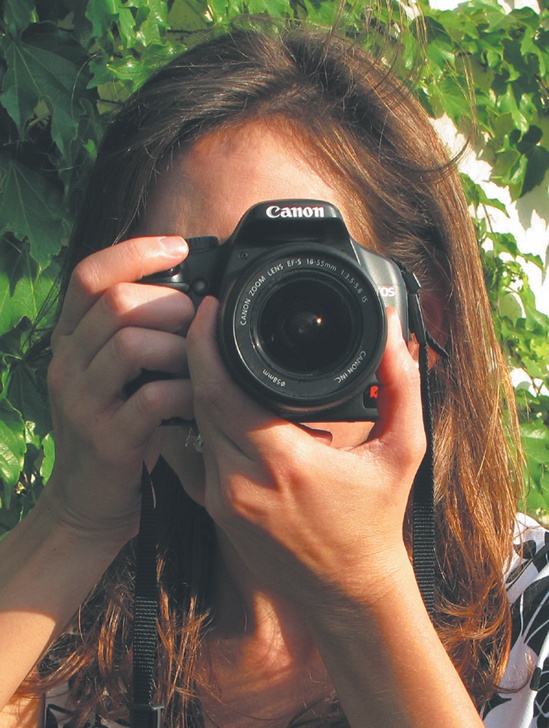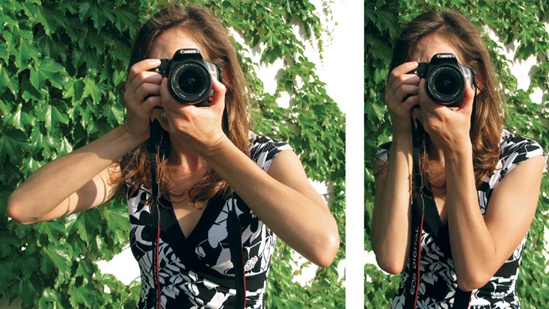Holding the Camera
Holding the XS might seem like a fairly obvious procedure, but good photographic "form" can mean the difference between a sharp image and one that's blurred from camera shake. Observing a few simple guidelines about camera grip and posture will improve your chances of getting stable, sharp images.
The Grip
Obviously, your right hand goes around the camera's grip, with your forefinger positioned on the shutter button. To guarantee the most stable hold, your left hand should go underneath the lens barrel, where it connects to the camera.

Figure 2-12. Support the lens with your left hand to ensure a more stable hold on the camera.
Cradling the camera this way makes it easier to hold the camera for long periods of time and will help you hold the camera steady. With your forefinger on the shutter release, you should be able to easily reach the control buttons on the back of the camera with your thumb.
Feet, Elbows, and Neck
When standing, your most solid, secure stance is to have both feet firmly planted on the ground, about shoulder-width apart. Obviously, depending on the terrain, this may or may not be possible. The best way to ensure a stable hold is to always remember to keep your elbows touching your sides.

Figure 2-13. Elbow position is critical to achieving a stable, ...
Get The Canon EOS Digital Rebel XS/1000D Companion now with the O’Reilly learning platform.
O’Reilly members experience books, live events, courses curated by job role, and more from O’Reilly and nearly 200 top publishers.

